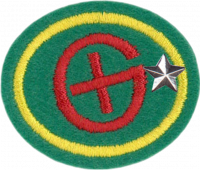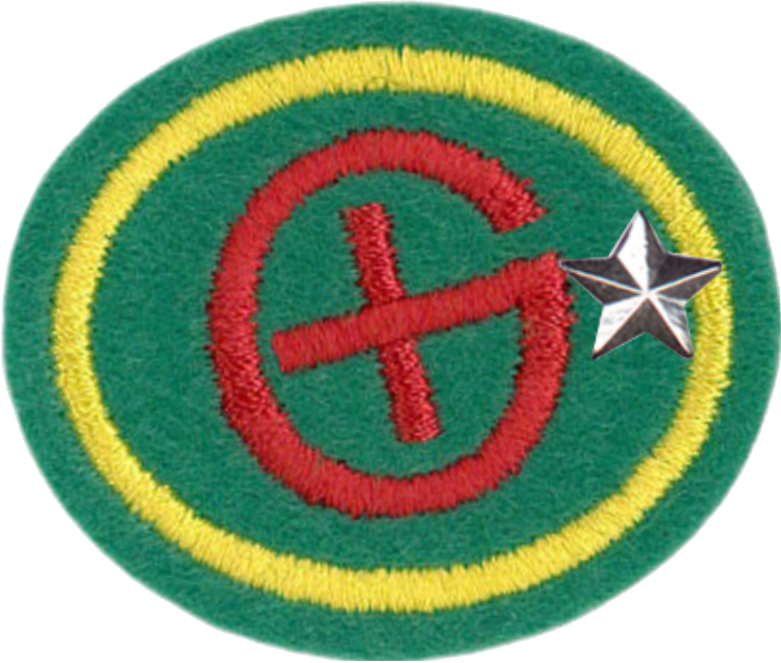Difference between revisions of "AY Honors/Geocaching - Advanced/Answer Key 2/es"
(Created page with "{{clear}}") |
|||
| (28 intermediate revisions by 2 users not shown) | |||
| Line 1: | Line 1: | ||
| − | + | {{HonorSubpage}} | |
| − | + | {{#vardefine:reqpage|{{#titleparts:{{PAGENAME}}|2}}/Requirements 2}} | |
| − | |||
| − | |||
| − | |||
| − | |||
| − | |||
| − | |||
| − | |||
| − | |||
| − | |||
| − | |||
| − | |||
| − | |||
| − | |||
<section begin="Body" /> | <section begin="Body" /> | ||
| − | {{ansreq|page={{# | + | {{ansreq|page={{#var:reqpage}}|num=1}} |
<noinclude></noinclude> | <noinclude></noinclude> | ||
<!-- 1. Tener la especialidad de Geocaching. --> | <!-- 1. Tener la especialidad de Geocaching. --> | ||
| − | {{honor_prerequisite | + | {{honor_prerequisite|honor=Geocaching|displayname=Geocaching}} |
<noinclude></noinclude> | <noinclude></noinclude> | ||
{{CloseReq}} <!-- 1 --> | {{CloseReq}} <!-- 1 --> | ||
| − | {{ansreq|page={{# | + | {{ansreq|page={{#var:reqpage}}|num=2}} |
<noinclude></noinclude> | <noinclude></noinclude> | ||
<!-- 2. Definir los siguientes términos: --> | <!-- 2. Definir los siguientes términos: --> | ||
<noinclude></noinclude> | <noinclude></noinclude> | ||
| − | {{ansreq|page={{# | + | {{ansreq|page={{#var:reqpage}}|num=2a}} <!--T:48--> |
<noinclude></noinclude> | <noinclude></noinclude> | ||
<noinclude></noinclude> | <noinclude></noinclude> | ||
{{CloseReq}} <!-- 2a --> | {{CloseReq}} <!-- 2a --> | ||
| − | {{ansreq|page={{# | + | {{ansreq|page={{#var:reqpage}}|num=2b}} |
<noinclude></noinclude> | <noinclude></noinclude> | ||
<noinclude></noinclude> | <noinclude></noinclude> | ||
{{CloseReq}} <!-- 2b --> | {{CloseReq}} <!-- 2b --> | ||
| − | {{ansreq|page={{# | + | {{ansreq|page={{#var:reqpage}}|num=2c}} |
<noinclude></noinclude> | <noinclude></noinclude> | ||
<noinclude></noinclude> | <noinclude></noinclude> | ||
{{CloseReq}} <!-- 2c --> | {{CloseReq}} <!-- 2c --> | ||
| − | {{ansreq|page={{# | + | {{ansreq|page={{#var:reqpage}}|num=2d}} |
<noinclude></noinclude> | <noinclude></noinclude> | ||
<noinclude></noinclude> | <noinclude></noinclude> | ||
{{CloseReq}} <!-- 2d --> | {{CloseReq}} <!-- 2d --> | ||
| − | {{ansreq|page={{# | + | {{ansreq|page={{#var:reqpage}}|num=2e}} |
<noinclude></noinclude> | <noinclude></noinclude> | ||
<noinclude></noinclude> | <noinclude></noinclude> | ||
{{CloseReq}} <!-- 2e --> | {{CloseReq}} <!-- 2e --> | ||
| − | {{ansreq|page={{# | + | {{ansreq|page={{#var:reqpage}}|num=2f}} <!--T:49--> |
| − | <noinclude></noinclude> | + | <noinclude> |
| + | </noinclude> | ||
<noinclude></noinclude> | <noinclude></noinclude> | ||
{{CloseReq}} <!-- 2f --> | {{CloseReq}} <!-- 2f --> | ||
{{CloseReq}} <!-- 2 --> | {{CloseReq}} <!-- 2 --> | ||
| − | {{ansreq|page={{# | + | {{ansreq|page={{#var:reqpage}}|num=3}} |
<noinclude></noinclude> | <noinclude></noinclude> | ||
<!-- 3. Definir la latitud y la longitud. ¿Qué se entiende por grados, minutos y segundos? Demostrar cómo encontrar la latitud y longitud en un listado de geocachés. Mostrar cómo ingresar latitud y longitud en un receptor/aplicación de GPS. --> | <!-- 3. Definir la latitud y la longitud. ¿Qué se entiende por grados, minutos y segundos? Demostrar cómo encontrar la latitud y longitud en un listado de geocachés. Mostrar cómo ingresar latitud y longitud en un receptor/aplicación de GPS. --> | ||
| Line 65: | Line 53: | ||
{{clear}} | {{clear}} | ||
| − | {{clear}} | + | {{clear}} |
| − | + | {{clear}} | |
| − | + | {{clear}} | |
<noinclude></noinclude> | <noinclude></noinclude> | ||
{{CloseReq}} <!-- 3 --> | {{CloseReq}} <!-- 3 --> | ||
| − | {{ansreq|page={{# | + | {{ansreq|page={{#var:reqpage}}|num=4}} |
<noinclude></noinclude> | <noinclude></noinclude> | ||
| − | <!-- 4. | + | <!-- 4. Dar la historia de los siguientes: --> |
<noinclude></noinclude> | <noinclude></noinclude> | ||
| − | {{ansreq|page={{# | + | {{ansreq|page={{#var:reqpage}}|num=4a}} <!--T:19--> |
<noinclude></noinclude> | <noinclude></noinclude> | ||
<noinclude></noinclude> | <noinclude></noinclude> | ||
{{CloseReq}} <!-- 4a --> | {{CloseReq}} <!-- 4a --> | ||
| − | {{ansreq|page={{# | + | {{ansreq|page={{#var:reqpage}}|num=4b}} <!--T:20--> |
<noinclude></noinclude> | <noinclude></noinclude> | ||
<noinclude></noinclude> | <noinclude></noinclude> | ||
{{CloseReq}} <!-- 4b --> | {{CloseReq}} <!-- 4b --> | ||
| − | {{ansreq|page={{# | + | {{ansreq|page={{#var:reqpage}}|num=4c}} <!--T:21--> |
<noinclude></noinclude> | <noinclude></noinclude> | ||
| Line 94: | Line 82: | ||
{{CloseReq}} <!-- 4c --> | {{CloseReq}} <!-- 4c --> | ||
{{CloseReq}} <!-- 4 --> | {{CloseReq}} <!-- 4 --> | ||
| − | {{ansreq|page={{# | + | {{ansreq|page={{#var:reqpage}}|num=5}} |
<noinclude></noinclude> | <noinclude></noinclude> | ||
| − | <!-- 5. | + | <!-- 5. ¿Cuáles son las leyes/normas/directrices para la puesta de geocachés en los siguientes lugares en su región? --> |
<noinclude></noinclude> | <noinclude></noinclude> | ||
| − | {{ansreq|page={{# | + | {{ansreq|page={{#var:reqpage}}|num=5a}} <!--T:23--> |
<noinclude></noinclude> | <noinclude></noinclude> | ||
<noinclude></noinclude> | <noinclude></noinclude> | ||
{{CloseReq}} <!-- 5a --> | {{CloseReq}} <!-- 5a --> | ||
| − | {{ansreq|page={{# | + | {{ansreq|page={{#var:reqpage}}|num=5b}} <!--T:24--> |
| − | <noinclude></noinclude> | + | <noinclude></noinclude> |
| − | |||
| − | + | {{clear}} | |
<noinclude></noinclude> | <noinclude></noinclude> | ||
{{CloseReq}} <!-- 5b --> | {{CloseReq}} <!-- 5b --> | ||
| − | {{ansreq|page={{# | + | {{ansreq|page={{#var:reqpage}}|num=5c}} <!--T:25--> |
<noinclude></noinclude> | <noinclude></noinclude> | ||
| − | |||
| − | |||
<noinclude></noinclude> | <noinclude></noinclude> | ||
{{CloseReq}} <!-- 5c --> | {{CloseReq}} <!-- 5c --> | ||
| − | {{ansreq|page={{# | + | {{ansreq|page={{#var:reqpage}}|num=5d}} <!--T:26--> |
| − | <noinclude></noinclude> | + | <noinclude></noinclude> |
| − | |||
| − | + | {{clear}} | |
<noinclude></noinclude> | <noinclude></noinclude> | ||
{{CloseReq}} <!-- 5d --> | {{CloseReq}} <!-- 5d --> | ||
| − | {{ansreq|page={{# | + | {{ansreq|page={{#var:reqpage}}|num=5e}} <!--T:27--> |
<noinclude></noinclude> | <noinclude></noinclude> | ||
| − | |||
<noinclude></noinclude> | <noinclude></noinclude> | ||
{{CloseReq}} <!-- 5e --> | {{CloseReq}} <!-- 5e --> | ||
| − | {{ansreq|page={{# | + | {{ansreq|page={{#var:reqpage}}|num=5f}} <!--T:28--> |
<noinclude></noinclude> | <noinclude></noinclude> | ||
| Line 139: | Line 122: | ||
{{CloseReq}} <!-- 5f --> | {{CloseReq}} <!-- 5f --> | ||
{{CloseReq}} <!-- 5 --> | {{CloseReq}} <!-- 5 --> | ||
| − | {{ansreq|page={{# | + | {{ansreq|page={{#var:reqpage}}|num=6}} |
<noinclude></noinclude> | <noinclude></noinclude> | ||
| − | <!-- 6. | + | <!-- 6. Completar dos o más de las siguientes actividades: --> |
<noinclude></noinclude> | <noinclude></noinclude> | ||
| − | {{ansreq|page={{# | + | {{ansreq|page={{#var:reqpage}}|num=6a}} <!--T:30--> |
<noinclude></noinclude> | <noinclude></noinclude> | ||
| − | + | {{clear}} | |
| − | |||
| − | |||
| − | |||
| − | |||
| − | |||
| − | |||
| − | |||
| − | |||
| − | |||
| − | |||
| − | |||
| − | |||
| − | |||
| − | |||
| − | |||
| − | |||
| − | |||
| − | |||
| − | |||
| − | |||
| − | |||
| − | |||
| − | |||
<noinclude></noinclude> | <noinclude></noinclude> | ||
{{CloseReq}} <!-- 6a --> | {{CloseReq}} <!-- 6a --> | ||
| − | {{ansreq|page={{# | + | {{ansreq|page={{#var:reqpage}}|num=6b}} <!--T:32--> |
<noinclude></noinclude> | <noinclude></noinclude> | ||
| − | |||
<noinclude></noinclude> | <noinclude></noinclude> | ||
{{CloseReq}} <!-- 6b --> | {{CloseReq}} <!-- 6b --> | ||
| − | {{ansreq|page={{# | + | {{ansreq|page={{#var:reqpage}}|num=6c}} <!--T:33--> |
| − | <noinclude></noinclude> | + | <noinclude></noinclude> |
| − | |||
| − | + | {{clear}} | |
<noinclude></noinclude> | <noinclude></noinclude> | ||
{{CloseReq}} <!-- 6c --> | {{CloseReq}} <!-- 6c --> | ||
| − | {{ansreq|page={{# | + | {{ansreq|page={{#var:reqpage}}|num=6d}} <!--T:34--> |
<noinclude></noinclude> | <noinclude></noinclude> | ||
| − | |||
<noinclude></noinclude> | <noinclude></noinclude> | ||
{{CloseReq}} <!-- 6d --> | {{CloseReq}} <!-- 6d --> | ||
| − | {{ansreq|page={{# | + | {{ansreq|page={{#var:reqpage}}|num=6e}} <!--T:35--> |
<noinclude></noinclude> | <noinclude></noinclude> | ||
<noinclude></noinclude> | <noinclude></noinclude> | ||
{{CloseReq}} <!-- 6e --> | {{CloseReq}} <!-- 6e --> | ||
| − | {{ansreq|page={{# | + | {{ansreq|page={{#var:reqpage}}|num=6f}} <!--T:36--> |
<noinclude></noinclude> | <noinclude></noinclude> | ||
| Line 205: | Line 162: | ||
{{CloseReq}} <!-- 6f --> | {{CloseReq}} <!-- 6f --> | ||
{{CloseReq}} <!-- 6 --> | {{CloseReq}} <!-- 6 --> | ||
| − | {{ansreq|page={{# | + | {{ansreq|page={{#var:reqpage}}|num=7}} |
<noinclude></noinclude> | <noinclude></noinclude> | ||
| − | <!-- 7. | + | <!-- 7. Buscar y registrar al menos 18 geocachés que incluyan: --> |
| − | |||
<noinclude></noinclude> | <noinclude></noinclude> | ||
| − | {{ansreq|page={{# | + | {{ansreq|page={{#var:reqpage}}|num=7a}} <!--T:38--> |
<noinclude></noinclude> | <noinclude></noinclude> | ||
<noinclude></noinclude> | <noinclude></noinclude> | ||
{{CloseReq}} <!-- 7a --> | {{CloseReq}} <!-- 7a --> | ||
| − | {{ansreq|page={{# | + | {{ansreq|page={{#var:reqpage}}|num=7b}} <!--T:39--> |
<noinclude></noinclude> | <noinclude></noinclude> | ||
<noinclude></noinclude> | <noinclude></noinclude> | ||
{{CloseReq}} <!-- 7b --> | {{CloseReq}} <!-- 7b --> | ||
| − | {{ansreq|page={{# | + | {{ansreq|page={{#var:reqpage}}|num=7c}} <!--T:40--> |
<noinclude></noinclude> | <noinclude></noinclude> | ||
| − | |||
<noinclude></noinclude> | <noinclude></noinclude> | ||
{{CloseReq}} <!-- 7c --> | {{CloseReq}} <!-- 7c --> | ||
| − | {{ansreq|page={{# | + | {{ansreq|page={{#var:reqpage}}|num=7d}} <!--T:41--> |
<noinclude></noinclude> | <noinclude></noinclude> | ||
| Line 233: | Line 188: | ||
{{CloseReq}} <!-- 7d --> | {{CloseReq}} <!-- 7d --> | ||
{{CloseReq}} <!-- 7 --> | {{CloseReq}} <!-- 7 --> | ||
| − | {{ansreq|page={{# | + | {{ansreq|page={{#var:reqpage}}|num=8}} |
<noinclude></noinclude> | <noinclude></noinclude> | ||
| − | <!-- 8. | + | <!-- 8. Escribir acerca de su geocaché en su libro de registros en un sitio web de geocaching. --> |
| − | |||
| − | + | Nota para los instructores: Tenga en cuenta que estos requisitos dan la oportunidad a un GRUPO de ir a buscar una tesoro y utilizar una cuenta pre-existente de Geocaching para escribir el registro en el sitio web de geocaching. Cada Conquistador individual NO necesita escribir en un blog. Ningún requisito de «regístrese para una cuenta gratis de Geocaching.com» hasta la especialidad de nivel avanzado. | |
| − | <br /><nowiki>*</nowiki>''' | + | <br /><nowiki>*</nowiki>'''La aplicación de geocaching gratuita limita a cinco búsquedas por día de cachés con una calificación D/T de 2 o menos. Por lo tanto, una membresía trimestral o anual pagada sería necesaria para este requisito si se utiliza una aplicación de geocaching.''' |
<noinclude></noinclude> | <noinclude></noinclude> | ||
| Line 246: | Line 200: | ||
<noinclude></noinclude> | <noinclude></noinclude> | ||
==Referencias== | ==Referencias== | ||
| − | |||
| − | |||
<noinclude></noinclude> | <noinclude></noinclude> | ||
| − | + | {{CloseHonorPage}} | |
Latest revision as of 00:17, 19 July 2022
Nivel de destreza
2
Año
2005
Version
17.05.2024
Autoridad de aprobación
División Norteamericana
1
Para consejos e instrucciones, véase Geocaching (Búsqueda por GPS).
2
2a
2b
2c
2d
2e
2f
3
4
4a
4b
4c
5
5a
5b
5c
5d
5e
5f
6
6a
6b
6c
6d
6e
6f
7
7a
7b
7c
7d
8
Nota para los instructores: Tenga en cuenta que estos requisitos dan la oportunidad a un GRUPO de ir a buscar una tesoro y utilizar una cuenta pre-existente de Geocaching para escribir el registro en el sitio web de geocaching. Cada Conquistador individual NO necesita escribir en un blog. Ningún requisito de «regístrese para una cuenta gratis de Geocaching.com» hasta la especialidad de nivel avanzado.
*La aplicación de geocaching gratuita limita a cinco búsquedas por día de cachés con una calificación D/T de 2 o menos. Por lo tanto, una membresía trimestral o anual pagada sería necesaria para este requisito si se utiliza una aplicación de geocaching.


